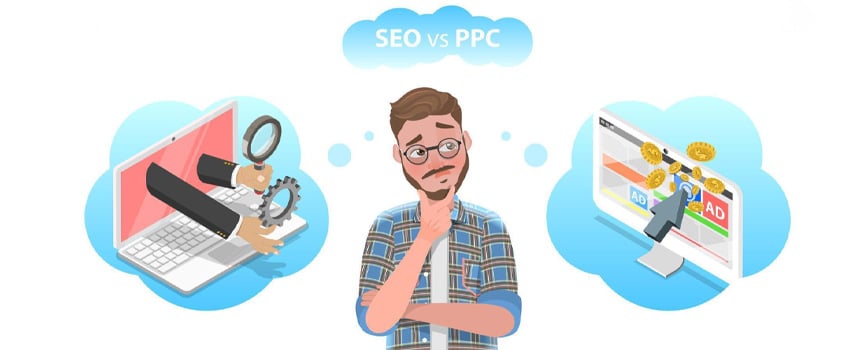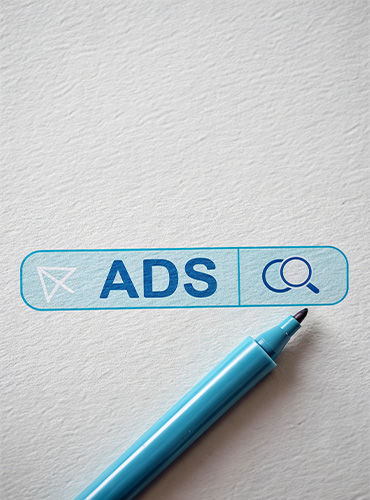
Nowadays, digital marketing is seeking every effective means whereby businesses could reach customers and outpace competitors. Among the many available strategies, two have dominated conversations: Search Engine Optimization, commonly referred to as SEO, and Pay-Per-Click advertising. Both of these are strong tools devised for driving traffic toward websites in order to enhance one’s online presence, but they reach these goals via fundamentally different approaches.

While SEO is about establishing a website’s visibility organically by optimizing its content, technical elements, and user experience to align with search engine algorithms, PPC does this through paid advertising campaigns that put your website at the top of search engine results or other platforms for specific keywords, which ensures instant visibility.
Each of these strategies has its own set of advantages, costs, and challenges. From an investment point of view, decisions to either go with SEO or PPC, or to balance between the two, make all the difference for businesses regarding marketing success. Budget, timeframes, industry competition, and long-term goals are all critical factors in determining the right approach.
In this article, go deep into the details of SEO and PPC to get a fair idea of their respective pros and cons, along with the best application scenarios. Be you an experienced marketer or a business owner new to digital strategies, understanding the differences between these methods will empower you to make informed decisions and maximize your marketing ROI.
What is SEO?
SEO means optimizing your website and its content for the best rankings among the results coming via organic searches using any search engine. It includes making a website more visible and building up credibility with regard to alignment with algorithms of various search engines.
Key Elements of SEO
- Keyword Research: Identifying the terms your audience searches for.
- On-Page Optimization: Optimizing meta tags, headers, URLs, and content for targeted keywords.
- Content Creation: Producing high-quality, relevant, and engaging content.
- Technical SEO: Improving site speed, mobile responsiveness, and crawlability.
- Link Building: Earning backlinks from reputable websites to enhance authority.
- User Experience (UX): Ensuring a seamless and user-friendly browsing experience.
Advantages of SEO
- Cost-Effective: No direct payment for clicks; investment is primarily in content creation and optimization.
- Long-Term Results: Once established, rankings can drive consistent traffic.
- Credibility and Trust: Organic listings often garner more trust than paid ads.
- Higher Click-Through Rates (CTR): Users are more likely to click on organic results over ads.
- Broader Reach: Can target users at different stages of the buyer’s journey.
Disadvantages of SEO
- Time-Consuming: Results take time, often months.
- Algorithm Dependence: Changes in search engine algorithms can affect rankings.
- Competition: Highly competitive niches require continuous effort.
What is PPC?
Pay-Per-Click (PPC) advertising is a model where businesses pay for their ads to appear on search engine results pages or other platforms. You’re charged each time a user clicks on your ad.
Key Elements of PPC
- Ad Creation: Crafting compelling ad copy and visuals.
- Keyword Targeting: Bidding on specific keywords relevant to your business.
- Budget Management: Setting daily or campaign-specific budgets.
- Landing Pages: Designing optimized pages to convert traffic.
- Performance Tracking: Monitoring metrics like CTR, cost-per-click (CPC), and conversions.
Advantages of PPC
- Immediate Results: Ads appear as soon as the campaign is live.
- Targeted Reach: Allows precise targeting by demographics, location, and device.
- Scalability: Budgets can be adjusted based on performance.
- Visibility for Competitive Keywords: Provides visibility for highly competitive terms that may be challenging for SEO.
- Measurable ROI: Detailed performance analytics enable clear measurement of results.
Disadvantages of PPC
- Cost: High competition can lead to expensive keywords.
- Short-Term Strategy: Traffic stops once the budget runs out.
- Ad Fatigue: Overexposure can reduce effectiveness over time.
- Learning Curve: Requires expertise in campaign management to maximize ROI.
When to Use SEO
SEO is ideal for businesses looking for sustainable growth and organic traffic over time. It’s particularly suitable for:
- Building brand authority.
- Generating consistent traffic.
- Targeting audiences in earlier stages of the buyer’s journey.
- Limited budgets where long-term ROI is critical.
When to Use PPC
PPC is best for businesses aiming for immediate results or targeting specific audiences. It works well for:
- Promoting time-sensitive offers or events.
- Testing new markets or products.
- Competitive niches where SEO is challenging.
- Ensuring visibility for high-value keywords.
Combining SEO and PPC for Maximum Impact
In many cases, SEO and PPC are most effective when used together. This integrated approach allows businesses to balance short-term gains with long-term sustainability.
- Keyword Synergy: Use PPC to test keyword performance and refine SEO strategies.
- Data Insights: Leverage PPC data to optimize organic content.
- Brand Visibility: Dominate both paid and organic results for high-priority keywords.
- Audience Retargeting: Use PPC retargeting to engage users who discovered your brand through SEO.
It’s not about deciding which is better between SEO and PPC but more about which works best for your business objectives, available resources, and strategic focus on marketing. Both bring in different specific benefits, each with its most compelling reasons; mastery of these could spell the difference between success and failure of your digital marketing effort.
SEO is a long-term investment that best suits brand credibility, improvement in organic traffic, and building up sustainable online presence. Quality content creation, website optimization, and a user-centric approach can give consistent results over time to SEO. Nevertheless, it requires patience and continuous effort since SEO takes months to fully materialize its benefits, especially in competitive industries.
On the other hand, PPC is a go-to solution for businesses seeking immediate visibility and measurable outcomes. With the ability to target specific demographics, launch campaigns quickly, and track performance in real-time, PPC excels in time-sensitive scenarios and highly competitive markets. However, the cost-per-click model and ongoing ad spend make it less sustainable as a standalone strategy for long-term growth.
But the real power, however, emanates from their interaction synergistically-combining them such that businesses can avail themselves of both worlds: building a strong base with SEO while using PPC for instant traffic, testing market opportunities, and reinforcing visibility. For example, this could be when running PPC Ads, and understanding from there as to what performed well for post-conversions and what type of user behavior really exists. Success in SEO, on the other hand, brings in organic results and reduces PPC reliance since online ad spending is reduced.
It calls for wholesome marketing today, led by data for all businesses. That includes regular scrutiny of the performance of campaigns for customer insight analysis and new strategy development based on the market trends. Be it SEO, PPC, or hybrid, your road to agility with informed decisions empowers you toward higher ROIs.
Ultimately, the question is not which is better-SEO or PPC-but what the mix of the two works best in response to specific objectives and challenges. This balance can do wonders indeed, as through a commitment to ongoing optimization, each will ensure the other unlocks robust growth, brand authority, and enduring success within an ever-competitive online marketplace.




